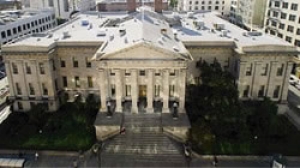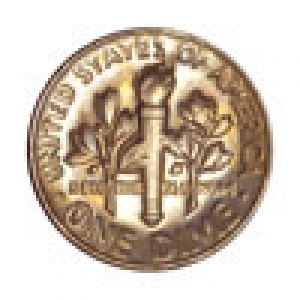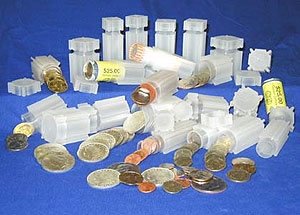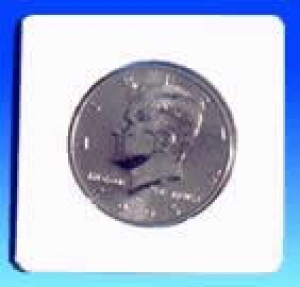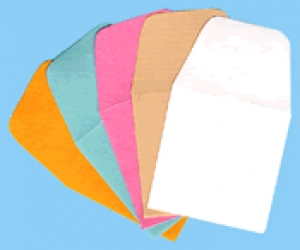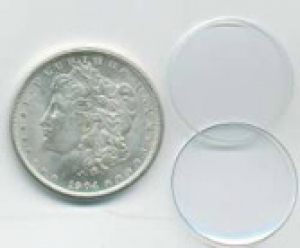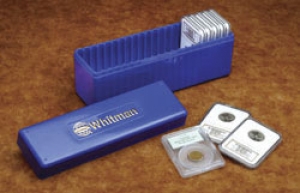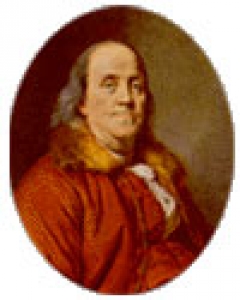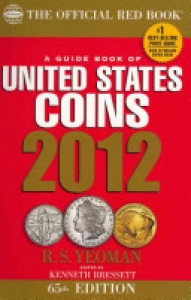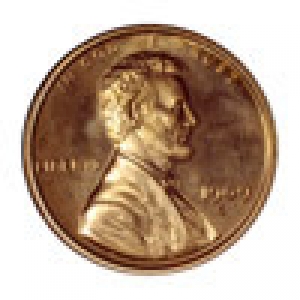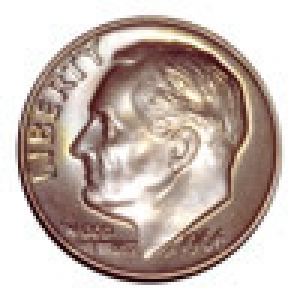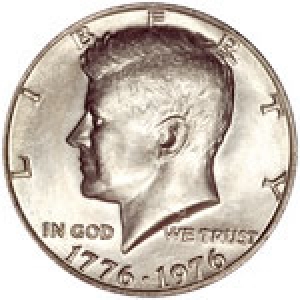Coin Collecting Merit Badge Requirements
This page gives simple explanations and hints on how a scout, usually ages 11-17 could complete the requirements to earn his Coin Collecting Merit Badge.
Further information is available in the Coin Collecting Merit Badge Booklet. The booklet is available at scout service centers (council offices) and in troop libraries.
1: Understand how coins are made, and where the active U.S. mint facilities are located.
To start off we have some basics on how the things we collect are made. This includes the designing process and die production as well as the actual mechanics of the milling of strips, making of blanks, and striking finished coins. Knowledge of the mint locations is a natural building block for the concepts of mintmarks.
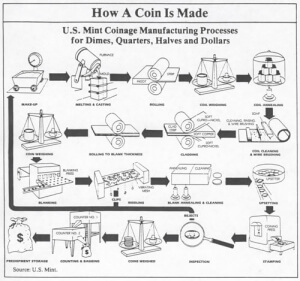
How are coins made?
The metal used to make coins starts in a solid form called an ingot. This ingot is then fed into a rolling mill that exerts pressure and the ingot bar is reduced in thickness from over six inches to a long strip of metal the thickness of the final coin.
Since 1965, U.S. dimes, quarters, half dollars, and dollars have been made from a core of copper, layered between and bonded to two thinner outer layers of copper-nickel (except the current Sacagawea dollar). Cents since 1982 have been made of a zinc core plated with copper.
Once the strips, called coils, are rolled to the proper thickness, they are about 13 inches wide and over 1,500 feet in length. They are then fed through a blanking press, which punches out circular discs, called blanks. The leftover strip, now punched full of holes, is called webbing and is shredded and recycled for use in future coinage.
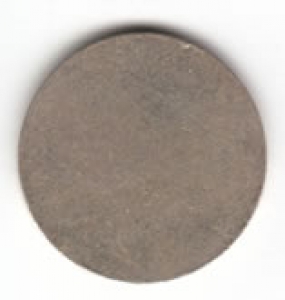
Blanks are the approximate size of a finished coin. They are heated in an annealing furnace to soften them, and then they are run through a washer and dryer to remove any stray grease. The shiny blanks are sorted on a riddler to screen out any that are the wrong size or incomplete shape. The clean blanks are sent through an upsetting mill, which squeezes the edges, giving them a slightly raised surface.
The blanks are now ready to be placed into a coining press, where dies strike the image and legends on them. The raised edges in the upsetting process assist in the striking of uniform flat edges at the rim, so that coins can be “stacked.”
In the United States, the stamping of the official image at one of the U.S. Mints makes them coins, and the new coins are inspected, counted by weight, and bagged for shipment to the 12 Federal Reserve banks, and then to your local bank for distribution.
U.S Mints
Today’s U.S. coins are made at the mints in Denver, Colorado (“D” mint mark, 1906 to date) and Philadelphia, Pennsylvania (“P” mint mark, 1793 to date).
The Old San Francisco Mint
Proof coins and special collector coins are manufactured at mints in San Francisco, California (“S” mint mark, 1854 to date) and West Point (“W” mint mark, 1984 to date). Pictured is the Old San Francisco Mint (The Granite Lady) which operated from 1874-1937.
Other mints that have operated in the United States are: Charlotte, North Carolina (“C” mint mark, 1838-1861, gold coins only), Carson City, Nevada (“CC” mint mark, 1870-1893), Dahlonega, Georgia (“D” mint mark, 1838-1861, gold coins only), and New Orleans, Louisiana (“O” mint mark, 1838-1909).
2: Explain these terms: obverse, reverse, reeding, clad, type set, date set.
The Boy Scout Coin Collecting Merit Badge booklet explains many more terms specific to the hobby, but these six were selected, as they are cornerstones to further requirements and a basis for the talk of the hobby. For a complete glossary of terms, consult the merit badge booklet.
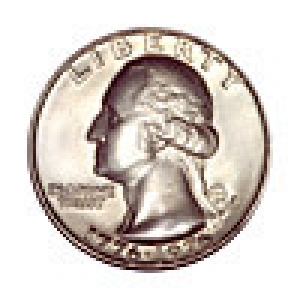
Obverse: the front of a coin, usually the side with the date or head. When you flip a coin and call “Heads,” this is the side you want.
Reverse: the back of a coin, usually the side without a date or a head. When you flip a coin and call “Tails,” this is the side you want.
Reeded Edge: an edge with raised vertical or diagonal marks designed to make it obvious if anyone has removed any metal from the edges. This was important when coins were valued for their full weight in precious or semi-precious metal. Modern U.S. coins with a reeded edge include the Roosevelt dime, Washington quarter and Kennedy half-dollar.
Clad: coins made of layers of metal. Examples include our modern Dimes, Quarters, Half Dollars, and One Dollars that have centers of copper and outer layers of a copper-nickel alloy.
Type Set: each kind of coin from any given time and place. For example, a 20th century U.S. Type Set would include each design of cent, nickel, dime, quarter, half dollar and dollar coin minted in the United States from 1900 to 1999.
Date Set: a set of the same type of coins with an example from each date that particular type of coin was minted; for example a date set of Lincoln “Wheat-back reverse” Cents would include an example from each year 1909 to 1958.
3: Explain the grading terms: Poor, Good, Very Good, Fine, Very Fine, Extremely Fine and Uncirculated. Show five different grade examples of the same type coin. Explain the term ‘Proof’ and explain why it is not a grade. Tell what ‘encapsulated’ coins are.
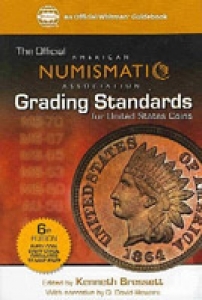
A collector’s coin or piece of paper money is valued based on its grade or state of preservation. What follows is a brief summation of the recognized terms used to describe the various levels of condition of coins. The Official ANA Grading Standards for United States Coins, from the American Numismatic Association, is the accepted reference on the subject and offers more complete details and illustrations of coins in each grade.
The grading system is based on a 1 to 70-point scale, with 70 being the perfect coin. The basic grading categories are:
- Poor: PO-1
- Fair: FR-2
- About Good: AG-3
- Good: G-4, G-6
- Very Good: VG-8, VG-10
- Fine: F-12, F-15
- Very Fine: VF-20, VF-25, VF-30, VF-35
- Extremely Fine: EF-40 (XF-40), EF-45 (XF-45)
- About Uncirculated: AU-50, AU-53, AU-55, AU-58
- Uncirculated or Mint State: MS-60 to MS-70
Grade: the determination of the degree of wear (or lack thereof) on a coin.
Poor: term used when only the basal state of the coin type is identifiable. Date and mintmark must be strong enough to be identifiable. Entire surface is worn and may have numerous defects.
Fair: term used to describe coins with most of the design details worn completely smooth. Much of the legend and date are merged into the field, with flat or missing rims.
About Good: term used to describe coins that are very heavily worn, with portions of the lettering, date, and legends worn smooth. Rims merge into the lettering.
Good: term for a coin that is heavily worn but which has most of the devices outlined.
Very Good: a grading term for a coin that is well worn with the major designs visible but faint in areas; easily recognizable.
Fine: term for a coin with moderate to considerable even wear, but clear and easy to read. A coin graded “Fine” is in better condition than a coin in “Very Good.”
Very Fine: term for a coin with moderate wear on the highest points of the design; light even wear on the on the surface.
Extremely Fine: term for a coin with light overall wear. All designs are very sharp. The coin may have some original mint luster.
About Uncirculated: term used to describe a coin with light traces of wear on the highest points of the design. The coin has some original mint luster and good eye appeal.
Uncirculated: term for a coin that has no signs of wear or circulation.
Proof: a term for a type of manufacturing process which results in a special surface or finish on coins made for collectors. It is not a grade.
Encapsulated Coins are coins that have been graded by a grading service and placed in a tamper-proof plastic holder or “slab” with an identification sticker. Most grading services use the official ANA Grading Standards.
4: Know three different ways to store a collection, and describe the benefits, drawbacks and expense of each of these methods. Pick one to use when completing requirements.
Storage of a collection – When one is about to embark on collecting something, one should know of the types of storage items available (and the associated costs and drawbacks associated with those options).
How do you store your collection of favorite coins? In a jar? box under your bed? or maybe in a bureau drawer? Coins that are hoarded in a box or jar can get scratched, rubbed and dented, lowering the grade and condition. NEVER glue or tape coins to anything! This will damage the coin and ruin any collector value. Collector coins should be organized and properly stored to provide protection for the coins and information about the collection. This will keep your investment safe and you will enjoy your collection more as you work to organize it.
Many people are familiar with cardboard folders that hold a specific type of coins like the 50-State Quarters. This is a good, inexpensive way to organize and display a date set of coins collected from circulation or pocket change. It is not a good way to store valuable collector coins as the cardboard holders can tarnish the coins and do not offer protection to the surfaces of the coins. Pushing the coins into the round holes also leaves oil from your fingers on the surface of the coins and permanent marks may develop. It is best to wear special cotton gloves when handling the coins and placing then into the holders.
A “2 x 2” is an inexpensive cardboard holder. One coin is placed in the center of one side of a square of cardboard with a see-through piece of Mylar in the center. The other identical side is folded over and stapled shut resulting in a 2-inch by 2-inch holder (thus the common name “2 by 2”) containing one coin. Both sides of the coin can be viewed through the plastic center (which varies in size according to the coin type) and information about the coin can be written on the cardboard portion. The holders fit perfectly into specially made boxes and albums. This is a very popular way for collectors and dealers to organize large collections of moderately priced coins. The drawback to this storage method is that the plastic centers can tear and the staples can damage the coins if not handled with care. With a lot of handling, the holders can become worn and unattractive.
Another popular and reasonably priced storage method is the 2 by 2-inch paper envelope, great for long-term storage. Information can easily be written on the outside of the envelope and groups of envelopes can be stored in special boxes. The drawback is that the coin has to be removed from the envelope to view.
There are several different types of plastic holders, slightly more expensive than cardboard or paper. The most common is a 2 x 2 holder or “flip” that has two pockets, one for a coin, and the other for a paper insert with information about the coin. When folded together, the size is 2-inches by 2-inches and they fit into the same special boxes and albums that hold cardboard 2 x 2 holders.
A danger from certain plastic holders is PVC, an ingredient in the plastic that is used to soften the material. PVC will turn coins slimy green over a period of time. Either use PVC-free holders or put the coin into a small PVC free “poly bag” or 2-piece “coin-tain” before placing it into the plastic holder. Soft plastic holders (with PVC) can be used for short-term storage. They are easier to handle than the stiffer PVC-free holders. Saflips are PVC-free inert flips that optically clear and will not crack or discolor.
Cointains are PVC-free holders. These two-piece clear plastic discs are made in many different coin sizes and fit together to completely encase your coin. There is no room for coin information, but you can view all three sides of the coin (obverse or heads side, reverse or tails side and the edge of the coin). Many Museums, including the ANA Money Museum use “tains” to protect their finest specimens while on exhibit to the public. Tains can be hard to handle, many different sizes are needed.
There are many types and sizes of square hard plastic snap-together holders for coins. They offer maximum protection for storage, but can be expensive.
Expensive collector coins that have been graded by a third-party grading service are encased in a hard plastic holder or “slab.” These vary in size, but most fit into special “slab” boxes and “slab” albums.
Expensive collections are usually stored in a bank or vault. It’s important to monitor the temperature and humidity and check the condition of the coin’s surfaces on a regular basis.
5: Do the following:
- Identify the persons depicted on the following denominations of current U.S. paper money: $1, $2, $5, $10, $20, $50, and $100.
- Explain ‘Legal Tender.’
- Describe the role the Federal Reserve System plays in the distribution of currency.
Paper Currency is readily available; it is good to know who is on the notes. Knowing how the currency is distributed in the banking system is a good way to re-enforce the use of the branch codes on the currency. With the redesign of the currency, perhaps this area of collecting will see an increase in popularity.
You all know that George Washington is depicted on the U.S. one-dollar notes and that Abraham Lincoln is on the five-dollar notes, but who is on the $2, $10, $20, $50 and $100 notes? Are they all United States Presidents? Why do you think they were honored in this way?
George Washington, the father of our country, was the first President of the United States. He served from 1789-97.
KNOW MORE! About George Washington
Abraham Lincoln was our sixteenth President (1861-1865) He was born February 12, 1809, in Hodgenville, Hardin County, Kentucky and died April 15, 1865, the morning after being shot at Ford’s Theatre in Washington, D.C. by John Wilkes Booth, an actor. He was married to Mary Todd Lincoln.
KNOW MORE! About Abraham Lincoln
Thomas Jefferson appears on the U.S. two-dollar bill. He was the third President of the U.S. serving from 1801-1809. He was born April 13, 1743 in Albermarle County, Virginia and died July 4, 1826 in Monticello (his home) in Virginia.
KNOW MORE! About Thomas Jefferson
Alexander Hamilton was born in 1757 on the island of Nevis, in the Leeward group, British West Indies. He was the Secretary of the Treasury from 1789-95. He is pictured on the face of the 10-dollar note and the U.S. Treasury building is pictured on the back.
Andrew Jackson, the 7th U.S. President graces the face of the U.S. 20-dollar note. Andrew Jackson was elected by popular vote, and as President he sought to act as the direct representative of the common man.
KNOW MORE! About Andrew Jackson
Ulysses S. Grant was the eighteenth U.S. President serving from 1869-1877. His portrait is on the 50-dollar bill. The U.S. Capital Building is on the back.
KNOW MORE! About Ulysses S. Grant
Benjamin Franklin was famous as a scientist, an inventor, a statesman, a printer, a philosopher, a musician, and an economist. Today, we honor Ben Franklin on the 100-dollar note as one of our Founding Fathers and as one of America’s greatest citizens. Although he was born in Boston, the city of Philadelphia is remembered as the home of Ben Franklin. In Philadelphia, you can find both Ben’s gravesite and the Benjamin Franklin National Memorial. You’ll also find The Franklin Institute Science Museum.
KNOW MORE! Ben’s Guide to U. S. Government, The World of Benjamin Franklin, An Extraordinary Life, an Electric Mind, and Benjamin Franklin: A Documentary History.
Legal Tender Notes are intended for “all debts public and private.” Also known as “United States notes,” they were introduced in 1862 and still circulate today. Unlike earlier demand notes, they are not redeemable in gold or silver of equivalent face value.
KNOW MORE! About Legal Tender Notes (PDF)
On December 23, 1913, an Act of Congress created the Federal Reserve System, which serves as the nation’s central bank. The System consists twelve Reserve Banks located in major cities throughout the United States: New York, Boston, San Francisco, Atlanta, Chicago, Cleveland, Dallas, Kansas City, Minneapolis, Richmond, St Louis, and Philadelphia. An important job of the Federal Reserve is to function as the “banks’ bank,” ensuring that institutions have enough currency and coin on hand to meet current demand, which varies with the seasons of the year. Currency and coin put into circulation to meet seasonal demand is eventually returned to the institutions by merchants and other business owners. So to reduce the excess currency and coin held in their vaults, banks typically return cash to the Reserve Bank, where it is credited to their accounts. The process is reversed when the institutions need to replenish or increase their supply of currency and coin.
KNOW MORE! About the Federal Reserve Bank
6: Do the following:
- Demonstrate to your counselor that you know how to use two U.S. or world coin reference catalogs.
- Read a numismatic magazine or newspaper and tell your counselor about what you learned.
Books are resources in the areas of interest. For U.S. Coins – The Guidebook of US Coins (Red Book), U.S. Coin Digest or the North American Coin and Price Guide. For World coins, the Standard Catalog of World Coins series, or country specific publications. All have pricing information and illustrations to assist in proper identification.
Newspapers or magazines – Weekly Newspapers – Coin World or Numismatic News, monthlys Bank Note Reporter, World Coin News,Canadian Coin News or magazines, Numismatist, Coin Age, Coins, Coin Prices. They are different, they are available at libraries or news stands. Reading is fundamental.
7: Describe the 1999-2008 50 state quarter program. Collect and show your counselor five different state quarters you have acquired from circulation.
A scout who has a foundation in mints, how they are made, grading, preservation and information, gets to show the coins he has collected!
The 50 state quarter program seems to have been popular with the general non-collecting public, and it has made folks look at their coins again. Collecting five different and knowing about the program is easy.
8: Collect from circulation a set of currently circulating U.S. coins (cent, nickel, dime, quarter, half dollar, and dollar). For each coin, locate the mint marks and designers’ initials, if any.
Collect a circulating type set; simple for the Cent thru Quarter, a bit more difficult for the Half and Dollar (it may require a visit to the bank). This requirement makes the scout look at the design elements, and use information learned in Requirement 1 about the Mints and mintmarks. Finding the designer’s initials may be a little more difficult as they are sometimes hidden in the design elements. You may need some magnification to clearly see them.
The Lincoln Memorial Cent was designed by Victor David Brenner(head of Lincoln) and Frank Gasparro (Lincoln Memorial reverse). The initials “VDB” are just under Lincoln’s shoulder; “FG” is to the right of the base of the monument.
The Jefferson Nickel was designed by Felix Schlag (“FS”) and his initials are on the obverse (heads side) below Jefferson’s shoulder.
The Roosevelt Dime was designed by John R. Sinnock and his initials “JS” are located at the base of Roosevelt’s neck.
The Washington Quarter obverse (heads side) was designed by New York sculpture, John Flanigan. His initials “JF” are located at the base of Washington’s neck. On the 50-State Quarters, the obverse side (with the head of George Washington) was modified slightly by Mint Engraver, William Cousins, whose initials were added to the right of Flanigan’s initials.
Gilroy Roberts, former Chief Engraver of the U.S. Mint designed the head of Kennedy on the Half Dollar. His initials are located at the base of the neck. The beautiful reverse with the presidential coat of arms was designed by Frank Gasparro.
The Sacagawea Golden Dollars were designed by New Mexico sculptress, Glenna Goodacre and Mint Engraver, Thomas D. Rogers. Goodacre’s initials “GG” are located on the sling that holds Sacagawea’s baby, Jean Baptiste or “Pomp.” Rogers initials “TDR” are located to the right of the tail of the Eagle near the “R” in DOLLAR.
9: Do one of the following:
- Collect and identify 50 foreign coins from at least 10 different countries.
- Collect and identify 20 bank notes from at least 5 different countries.
- Collect and identify 15 different tokens or medals.
- Collect a date set of a single type since the year of your birth.
This requirement gives a scout exposure to other areas of the hobby; world coins and paper money are often brought back from trips by relatives. It is a good way to re-enforce what one has learned in school with a country’s history and geography. Tokens and medals are often encountered by a scout at arcades, or with school awards. The date set gives a scout the opportunity to explore circulating change, and gives exposure to a popular way of collecting, that of the series date set.
a & b) Tips on Collection World Coins and Bank Notes by Bob Hartje
- World coins and bank notes are fun, inexpensive, educational, exciting.
- They help you learn about history, geography, economics, etc.
- Buy or borrow a copy of the Standard Catalog of World Coins (Krause Publications)
- You can purchase world coins by the pound from some dealers.
- Keep an inventory of your collection. You might want to include: Country, location, denomination, date, material, purchase price, date of purchase, interesting facts, etc.
- There are lots of ways to collect including: by denomination, country, design (animals, plants or flowers, women on coins, etc.), or try to collect one coin or note from every country.
c) Tokens and Medals
- A token is a coin-like object that is usually made of metal and represents a particular value or coin. Token are sometimes referred to as “Good Fors” because they may be “Good For” or exchangeable for a particular item (like one glass of soda) or service (like one hair cut). Some can be traded for actual money, most cannot. Tokens can advertise a particular merchant or product and can be very interesting and fun to collect.
- A medal is a coin-like object that is struck for award, celebration or commemoration. Unlike a token or coin, they have no stated value. Medals can be beautiful, elaborate pieces of art and are highly collectible.
Many books on tokens are found in the ANA Library and available for loan to ANA members.
There is a National club for people interested in collecting Tokens and Medals – “TAMS” (Token and Medal Society). They have an excellent journal.
d) Type Sets
The set can be of any one denomination (1 cent, 5 cents, 10 cents or 25 cents) and must include one (1) coin of every year, from the year you were born through 2005. Any mint is acceptable. All coins must be of the same denomination.
10: Do one of the following:
- Tour a U.S. Mint facility, the Bureau of Engraving and Printing, or a Federal Reserve Bank and describe what you learned to your counselor.
- With your parent’s permission, attend a coin show or a coin club meeting, or view the Web site of the U.S. Mint or a coin dealer, and report on what you learned.
- Give a talk about coin collecting to your troop or class at school.
- Do drawings of five colonial-era U.S. coins.
This requirement allows those who travel (visiting Philadelphia, Denver or Washington DC) or live in larger metropolitan areas to take advantage of a special trip to the Mint or Fed banks. If one is not is a big city, then those familiar with the Web can visit many different sites of dealers or museums. If a scout is comfortable speaking before a group, then the school talk option may be good. If a scout is not comfortable, then he can learn more about colonial coins by drawing some, and trust me, some of those drawings could be close but rough.
